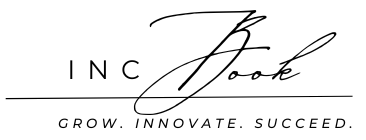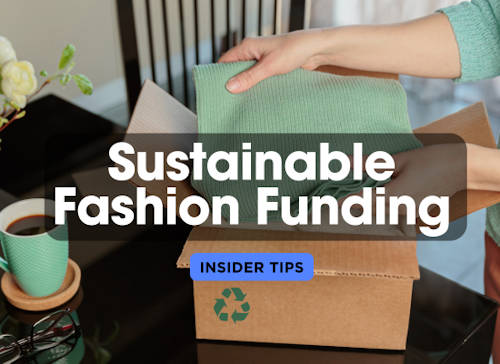The fashion industry is undergoing a transformative shift towards sustainability, with more entrepreneurs embracing eco-friendly practices and ethical production. However, building a sustainable fashion brand requires significant investment, from sourcing sustainable materials to adopting environmentally friendly production methods. Securing the right funding is crucial for turning your vision into reality. Whether you’re starting a new sustainable fashion line or expanding an existing brand, these tailored loan options can provide the financial backing needed to make a positive impact on the industry.
Hint! Make it to the end for Insider Tips
| IncBook: Sustainable Fashion Business Loans | |||||
|---|---|---|---|---|---|
| Type | Description | Amount | Rate | Pros | Cons |
| Green Business Loans | Loans specifically designed for businesses that focus on sustainability, including sustainable fashion brands. | $10,000 – $500,000 | 4% – 8% | Favorable terms for eco-friendly businesses; potential tax benefits. | Strict eligibility criteria; requires proof of sustainability. |
| Microloans for Sustainable Startups | Small loans aimed at early-stage sustainable businesses, ideal for covering initial costs. | $500 – $50,000 | 6% – 12% | Accessible to startups; less collateral required. | Limited loan amounts; higher interest rates. |
| SBA 7(a) Loans for Green Businesses | Government-backed loans tailored for small businesses with a focus on sustainability, including fashion brands. | $50,000 – $5,000,000 | 5% – 10% | Low down payment; long repayment terms. | Lengthy application process; strict eligibility criteria. |
| Impact Investment Loans | Loans provided by impact investors focused on funding businesses that generate positive social or environmental impact. | $100,000 – $2,000,000 | Varies | Access to larger funds; support from mission-driven investors. | May involve equity; investor oversight. |
| Community Development Financial Institutions (CDFI) Loans | Loans aimed at supporting sustainable businesses in underserved communities, including fashion brands. | $5,000 – $250,000 | 4% – 9% | Supports community-focused initiatives; flexible terms. | Limited to specific regions; smaller loan amounts. |
| Crowdfunding for Sustainable Fashion | Raising funds through online platforms by engaging with consumers who support sustainable fashion. | $5,000 – $250,000 | N/A | Engages community; no repayment if reward-based. | Uncertain funding outcome; significant marketing effort required. |
Insider Tips
#1. Partner with Sustainable Material Suppliers: Some sustainable material suppliers are willing to offer financing or deferred payment options to startups that align with their mission. Building a strong relationship with your suppliers could lead to better payment terms or even investment, reducing your upfront costs and improving your cash flow.
#2. Leverage Sustainable Certifications for Better Loan Terms: Obtaining certifications like GOTS (Global Organic Textile Standard) or Fair Trade can enhance your brand’s credibility and make you eligible for specialized green business loans with better terms. These certifications demonstrate a commitment to sustainability, making lenders more willing to offer favorable rates.
#3. Tap into Fashion-Specific Green Grants: Look for grants that are specifically targeted at sustainable fashion brands. Organizations like the CFDA (Council of Fashion Designers of America) and the Sustainable Apparel Coalition occasionally offer grants and competitions that provide funding to brands pushing the envelope in sustainability. These grants can be a non-repayable boost to your business.
#4. Use Blockchain for Transparency to Attract Investors: Implementing blockchain technology to provide transparency in your supply chain can be a game-changer. This technology allows consumers and investors to see exactly where your materials come from and how they are processed, which can attract impact investors who are focused on ethical and sustainable practices.
#5. Build Relationships with Impact Investors: Impact investors are increasingly interested in sustainable fashion, but they often require more than just a business plan. Engage them by showcasing how your brand not only minimizes environmental impact but also contributes to social good, such as empowering women or supporting local artisans. Personal stories and clear, measurable impacts can make your pitch more compelling.
#6. Utilize Fashion Tradeshows to Network with Green Lenders: Sustainable fashion tradeshows are not just for showcasing your products. They are also prime opportunities to network with green lenders and investors who are specifically looking for businesses like yours. Use these events to build relationships, present your sustainability initiatives, and explore potential funding partnerships.
#7. Collaborate with Eco-Conscious Influencers: Collaborate with influencers who are passionate about sustainability to raise awareness about your brand. In some cases, these influencers may be interested in investing or providing loans to align their brand with yours. They can also help you create a successful crowdfunding campaign by leveraging their audience.
#8. Explore Revenue-Based Financing: Instead of traditional loans, consider revenue-based financing where repayments are tied to your business’s revenue. This model is particularly useful for sustainable fashion brands, as it aligns the lender’s success with your business’s growth, offering more flexibility during slower sales periods.
#9. Engage with Local Governments for Support: Many local governments offer incentives or support programs for businesses that focus on sustainability. This could include tax breaks, low-interest loans, or grants specifically for green businesses. Research what’s available in your area and use these programs to bolster your financial strategy.
#10. Crowdfund with a Social Cause: When crowdfunding, go beyond just promoting your products. Highlight the social impact of your sustainable practices—whether it’s reducing waste, supporting fair wages, or using eco-friendly materials. Consumers are more likely to support brands that align with their values, and this approach can lead to a more successful funding campaign.



